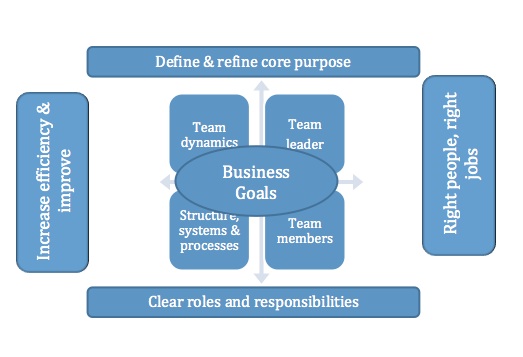A high performing team is a thing of beauty.. It looks and feels like a well oiled machine, that just does what’s it meant to do – over and over again, without drama. Of course, knowing what it looks like is one thing, getting there quite another.
How a high performing team differs from a work group
I am running a great session next week- one where we talk about the attributes and components of a high performing team. And more importantly – what can a team do to enable it to become even more high performing.
I will also be talking to them about the difference between a group of people that happen to work together and a true team. The two often get confused; and it’s this confusion that often provides the background for less than optimal team performance. There is a great explanation here that explains how the two differ.
Knowing whether you are a work group or a team is important – some groups of people simply aren’t teams. And that’s ok. No amount of fiddling is going to change that.
What makes a high performing team?
I have written before about the what makes a high performing team. My model has at its most basic, the following components:
- How is the team being led?
- Are the right people in the right jobs (at the right times?)
- Do the systems, processes and procedures of the organization support the team?
- Team dynamics – how does the team interact?
The fancier version of this model looks like this:

There’s also nice model from Guttman that describes the attributes well:
- The mission, goals and business priorities of the team are clear to all team members.
- The team is comprised of the “right” players. This implies that they are technically/functionally competent, with the ability and willingness to influence across functional lines.
- The roles/points of intersection/turf are clear to all team members regarding every player on the team.
- Team members are committed to the team “winning” (that is, achieving the business goals) over their own parochial/functional self interest.
- The decision making/leadership mechanism that the team employs is understood and accepted by all team members.
- Every team member feels a sense of accountability/ownership for the business results which the team creates. As a result, every team member feels that they have a license to speak on any matter concerning how the team functions. The team operates as a Managing Board of Directors.
- All team members are comfortable dealing with conflict in the team. Consequently they are willing to be candid, able to depersonalize and attempt to reach a resolution on outstanding team issues.
- The team has a willingness to periodically self assess its progress as group, focusing on how the team function as a total group. This includes assessing business deliverables, individual commitments and relevant protocols.
There are two further components of high performing teams that neither of these model overtly picks up:
- the research from Marcial F Losanda into teams that shows for a team to shift to high performance the ratio of positive feedback interactions v negative needs to be 3:1 ( this is a 6:1 ratio for elite performance); and
- it’s not enough for a team to be inwardly focussed. High performing teams are perceived to be so both within the team and external to the team; more broadly through the organisation.
Team members know when they are part of something special – a true high performing team. It doesn’t happen that often (sadly). But when it does, it’s something to be relished.
What do you think? Have you been part of a team that was something special? What made it so? What did it feel like? Was it at work, a sporting team, or something in the community?

